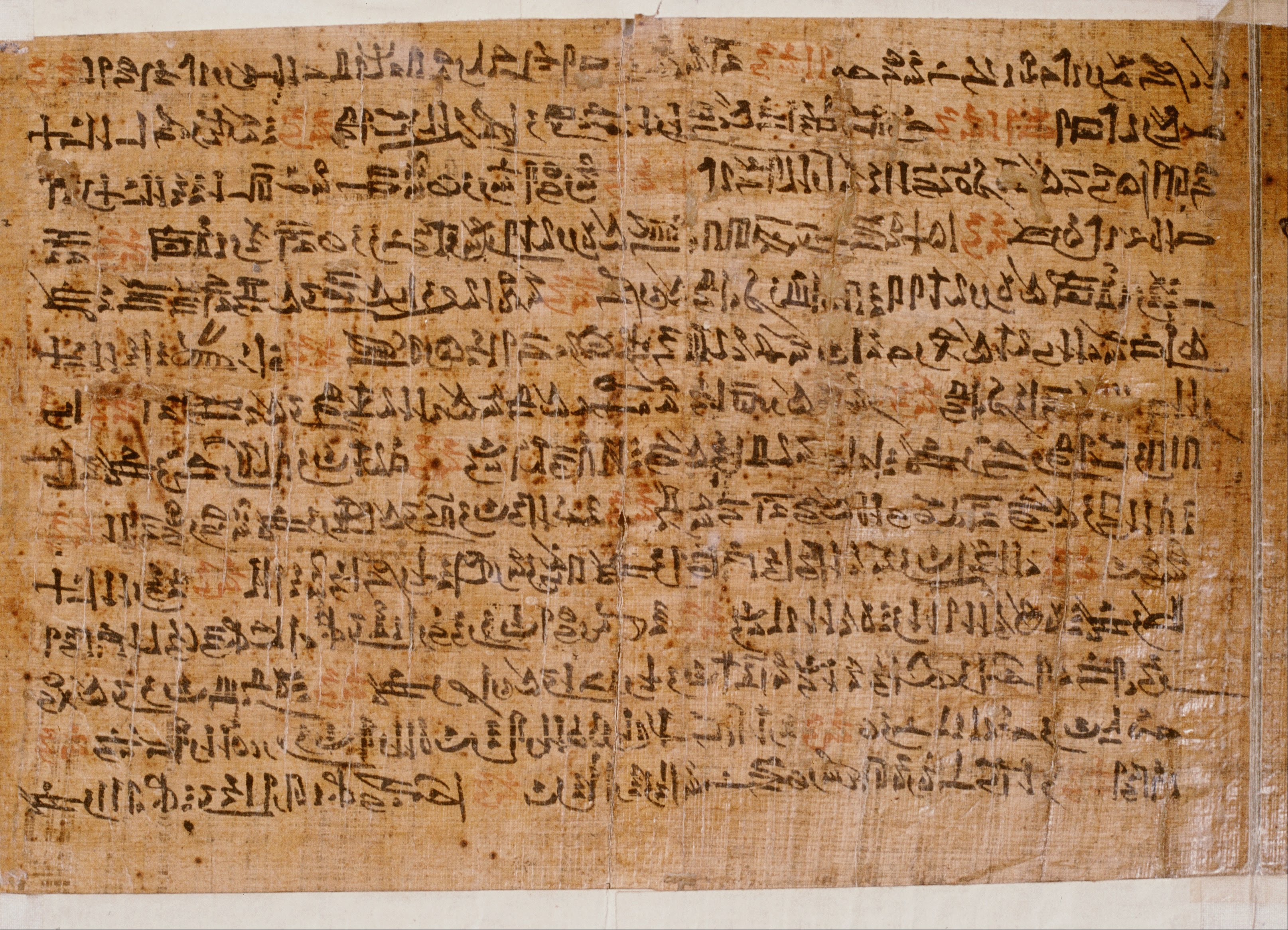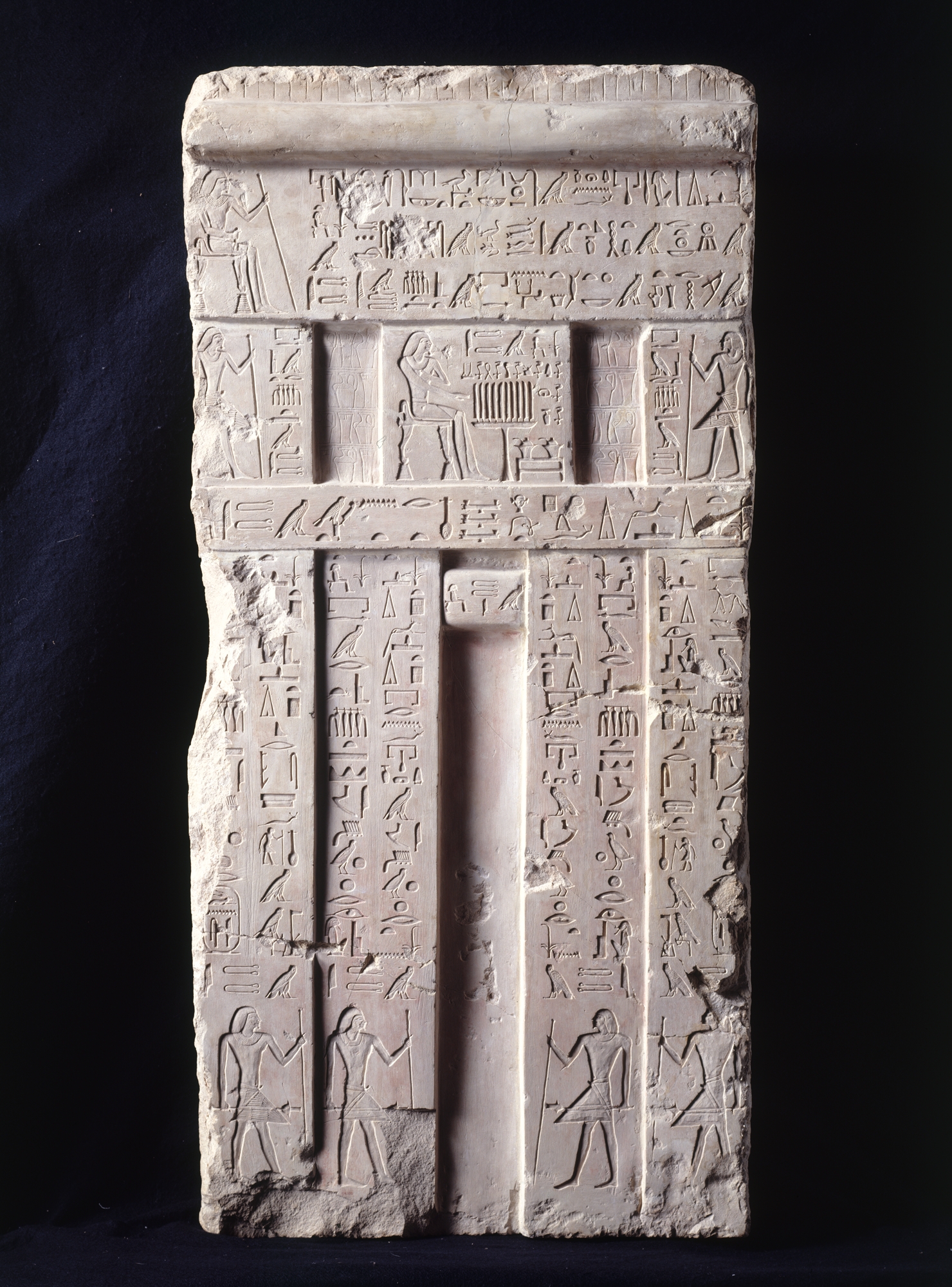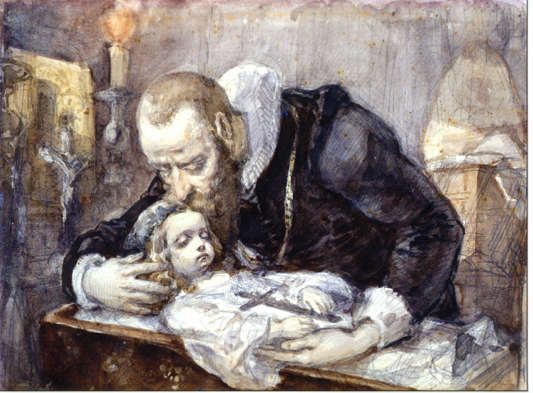|
Ipuwer Papyrus
The Ipuwer Papyrus (officially Papyrus Leiden I 344 ''recto'') is an ancient Egyptian hieratic papyrus made during the Nineteenth Dynasty of Egypt, and now held in the Rijksmuseum van Oudheden in Leiden, Netherlands. It contains the ''Admonitions of Ipuwer'', an incomplete literary work whose original composition is dated no earlier than the late Twelfth Dynasty of Egypt ( 1991–1803 BCE). Discovery During the first half of the 19th century, many Egyptian ancient artifacts were discovered in Egypt by either scholars or merchants who tried to make a quick profit. The Ipuwer Papyrus was discovered by such unprofessional traders, who sold it to Giovanni Anastasi, who served as Consul in Egypt for Sweden and Norway. In 1828, Anastasi sold the papyrus to the Dutch government. Content In the poem, Ipuwer – a name typical of the period 1850–1450 BCE – complains that the world has been turned upside-down: a woman who had not a single box now owns furniture, a girl who used to ... [...More Info...] [...Related Items...] OR: [Wikipedia] [Google] [Baidu] |
Leiden
Leiden ( ; ; in English language, English and Archaism, archaic Dutch language, Dutch also Leyden) is a List of cities in the Netherlands by province, city and List of municipalities of the Netherlands, municipality in the Provinces of the Netherlands, province of South Holland, Netherlands. The municipality of Leiden has a population of 127,046 (31 January 2023), but the city forms one densely connected agglomeration with its suburbs Oegstgeest, Leiderdorp, Voorschoten and Zoeterwoude with 215,602 inhabitants. The Statistics Netherlands, Netherlands Central Bureau of Statistics (CBS) further includes Katwijk in the agglomeration which makes the total population of the Leiden urban agglomeration 282,207 and in the larger Leiden urban area also Teylingen, Noordwijk, and Noordwijkerhout are included with in total 365,913 inhabitants. Leiden is located on the Oude Rijn (Utrecht and South Holland), Oude Rijn, at a distance of some from The Hague to its south and some from Amsterdam ... [...More Info...] [...Related Items...] OR: [Wikipedia] [Google] [Baidu] |
Good Old Days
Good old days – commonly stylized as "good ol' days" – is a cliché in popular culture used to reference a time considered by the speaker to be better than the current era. It is a form of nostalgia that can reflect homesickness or Longing (emotion), yearning for long-gone moments. There is a predisposition, caused by cognitive biases such as rosy retrospection, a form of survivorship bias, for people to view the past more favourably and future more negatively. Notable uses In literature In 1726, John Henley (preacher), John Henley used this phrase in his book ''The Primitive Liturgy'': "to all honest Admirers of the good old Days of their best and wisest Fore-fathers, this first Part of the Primitive Liturgy Is most humbly dedicated". In 1727, Daniel Defoe wrote in ''The Complete English Tradesman'': "In the good old days of Trade, which our Fore-fathers plodded on in." In this part of his book, Defoe talks about how in 'the good old days' tradesmen were better off than in ... [...More Info...] [...Related Items...] OR: [Wikipedia] [Google] [Baidu] |
Maat
Maat or Maʽat ( Egyptian: ''mꜣꜥt'' /ˈmuʀʕat/, Coptic: ⲙⲉⲓ) comprised the ancient Egyptian concepts of truth, balance, order, harmony, law, morality, and justice. Maat was also the goddess who personified these concepts, and regulated the stars, seasons, and the actions of mortals and the deities who had brought order from chaos at the moment of creation. Her ideological opposite was Isfet (Egyptian '' jzft''), meaning injustice, chaos, violence or to do evil. Pronunciation Cuneiform texts indicate that the word ''m3ˤt'' was pronounced /múʔʕa/ during the New Kingdom of Egypt, having lost the feminine ending ''t''. Vowel assimilation of ''u'' to ''e'' later produced the Coptic word "truth, justice". History The earliest surviving records indicating that Maat is the norm for nature and society, in this world and the next, were recorded during the Old Kingdom of Egypt, the earliest substantial surviving examples being found in the Pyramid Texts of Unas ( and ... [...More Info...] [...Related Items...] OR: [Wikipedia] [Google] [Baidu] |
Prophecy Of Neferti
The ''Prophecy of Neferti'' is one of the few surviving literary texts from ancient Egypt. The story is set in the Old Kingdom, under the reign of King Sneferu. However, the text should be attributed to an individual named Neferyt, who most likely composed it at the beginning of the Twelfth Dynasty. The nature of the literary text is argued upon. There are a number of different theories stating that the literature is a historical romance in pseudo-prophetic form, political literature, religious motivation as well as a literary text created to change and improve the situation in Egypt during the Twelfth Dynasty. Content The Prophecies of Neferti is set in a fictionalized court of King Sneferu ( 2575–2551 BC), who ruled Egypt during the Fourth Dynasty. The sage Neferti is summoned to the court so that he can entertain the King with fine speeches. He is asked to speak of the future rather than the past, the sage prophesies the downfall of the Egyptian nation by civil war, leading t ... [...More Info...] [...Related Items...] OR: [Wikipedia] [Google] [Baidu] |
Propaganda
Propaganda is communication that is primarily used to influence or persuade an audience to further an agenda, which may not be objective and may be selectively presenting facts to encourage a particular synthesis or perception, or using loaded language to produce an emotional rather than a rational response to the information that is being presented. Propaganda can be found in a wide variety of different contexts. Beginning in the twentieth century, the English term ''propaganda'' became associated with a Psychological manipulation, manipulative approach, but historically, propaganda had been a neutral descriptive term of any material that promotes certain opinions or ideology, ideologies. A wide range of materials and media are used for conveying propaganda messages, which changed as new technologies were invented, including paintings, cartoons, posters, pamphlets, films, radio shows, TV shows, and websites. More recently, the digital age has given rise to new ways of dissemina ... [...More Info...] [...Related Items...] OR: [Wikipedia] [Google] [Baidu] |
Complaints Of Khakheperraseneb
The "Complaints of Khakheperraseneb", also called the "Lamentations of Khakheperraseneb", is an ancient Egyptian text. Our earliest extant copy of the work is likely dated between 1800 and 1650 BCE. It’s outer bound is 1250 since writing tablets of this sort disappear from the archaeological record by that time but the style of script suggests a date much earlier by a margin of at least several centuries. It pairs with other literature of the second Egyptian dark age, and shows a particular affinity with Ipuwer Papyrus, the Ipuwer Papyrus whose descriptions of current events have often been compared with The Exodus, the Biblical Exodus.ibid. Alan Gardiner, "APPENDIX Brit. Mus. 5645 (plates 17-18).” p. 96-97: “My surprise and pleasure were great when many of the rare words known to me from the Ipuwer Papyrus, ''Admonitions [of Ipuwer]'' made their appearance one by one, as I advanced with the transcription; it seemed almost as though this new text had been written for the e ... [...More Info...] [...Related Items...] OR: [Wikipedia] [Google] [Baidu] |
First Intermediate Period
The First Intermediate Period, described as a 'dark period' in ancient Egyptian history, spanned approximately 125 years, c. 2181–2055 BC, after the end of the Old Kingdom of Egypt, Old Kingdom. It comprises the seventh Dynasty, Seventh (although this is mostly considered spurious by Egyptologists), eighth dynasty of Egypt, Eighth, Ninth dynasty of Egypt, Ninth, Tenth dynasty of Egypt, Tenth, and part of the Eleventh dynasty of Egypt, Eleventh List of Egyptian dynasties, Dynasties. The Periodization of Ancient Egypt, concept of a "First Intermediate Period" was coined in 1926 by Egyptologists Georg Steindorff and Henri Frankfort. Very little monumental evidence survives from this period, especially from the beginning of the era. The First Intermediate Period was a dynamic time in which rule of Egypt was roughly equally divided between two competing power bases. One of the bases was at Herakleopolis Magna, Heracleopolis in Lower Egypt, a city just south of the Faiyum region, and ... [...More Info...] [...Related Items...] OR: [Wikipedia] [Google] [Baidu] |
Old Kingdom
In ancient Egyptian history, the Old Kingdom is the period spanning –2200 BC. It is also known as the "Age of the Pyramids" or the "Age of the Pyramid Builders", as it encompasses the reigns of the great pyramid-builders of the Fourth Dynasty, such as King Sneferu, under whom the art of pyramid-building was perfected, and the kings Khufu, Khafre and Menkaure, who commissioned the construction of the pyramids at Giza. Egypt attained its first sustained peak of civilization during the Old Kingdom, the first of three so-called "Kingdom" periods (followed by the Middle Kingdom and New Kingdom), which mark the high points of civilization in the lower Nile Valley. The concept of an "Old Kingdom" as one of three "golden ages" was coined in 1845 by the German Egyptologist Baron von Bunsen, and its definition evolved significantly throughout the 19th and the 20th centuries. Not only was the last king of the Early Dynastic Period related to the first two kings of the Old Ki ... [...More Info...] [...Related Items...] OR: [Wikipedia] [Google] [Baidu] |
Memphis, Egypt
Memphis (, ; Bohairic ; ), or Men-nefer, was the ancient capital of Inebu-hedj, the first Nome (Egypt), nome of Lower Egypt that was known as ''mḥw'' ("North"). Its ruins are located in the vicinity of the present-day village of Mit Rahina (), in markaz (county) Badrashin, Giza, Egypt. Along with the Memphite Necropolis, pyramid fields that stretch on a desert plateau for more than on its west, including the famous Giza pyramid complex, Pyramids of Giza, Memphis and its necropolis have been listed as a World Heritage Site. The site is open to the public as an open-air museum. According to legends related in the early third century BC by Manetho, a priest and historian who lived in the Ptolemaic Kingdom during the Hellenistic period of ancient Egypt, the city was founded by Pharaoh, King Menes. It was the List of Egyptian capitals, capital of ancient Egypt (''Kemet'' or ''Kumat'') during both the Early Dynastic Period of Egypt, Early Dynastic Period and Old Kingdom and remain ... [...More Info...] [...Related Items...] OR: [Wikipedia] [Google] [Baidu] |
City Lament
A City Lament is a poetic elegy for a lost or fallen city. This literary genre, from around 2000 BCE onwards, was particularly prevalent in the Mesopotamian region of the Ancient Near East. The Bible's Book of Lamentations concerning Jerusalem around 586 BCE, contains some elements of a city lament. Features In the five known Mesopotamian City Laments, the lament is written in voice of the city's tutelary goddess. The destruction of the city, the mass killing of its inhabitants, and the loss of its central temple are vividly described. Special attention is given to the divine sphere, where the gods order the destruction of the city, the city patron gods implore against this, but in vain. The patron gods are exiled to live as deportees in foreign cites, lamenting their devastated shrine. Subsequently, they return from exile and renew their former existence. Mesopotamia The Lament for Ur, or Lamentation over the city of Ur is a Sumerian language, Sumerian lament composed around the ... [...More Info...] [...Related Items...] OR: [Wikipedia] [Google] [Baidu] |
Sumeria
Sumer () is the earliest known civilization, located in the historical region of southern Mesopotamia (now south-central Iraq), emerging during the Chalcolithic and early Bronze Ages between the sixth and fifth millennium BC. Like nearby Elam, it is one of the cradles of civilization, along with Egypt, the Indus Valley, the Erligang culture of the Yellow River valley, Caral-Supe civilization, Caral-Supe, and Mesoamerica. Living along the valleys of the Tigris and Euphrates rivers, Sumerian farmers grew an abundance of grain and other crops, a surplus of which enabled them to form urban settlements. The world's earliest known texts come from the Sumerian cities of Uruk and Jemdet Nasr, and date to between , following a period of proto-writing . Name The term "Sumer" () comes from the Akkadian Empire, Akkadian name for the "Sumerians", the ancient non-Semitic languages, Semitic-speaking inhabitants of southern Mesopotamia.Piotr Michalowski, "Sumerian," ''The Cambridge Encyclope ... [...More Info...] [...Related Items...] OR: [Wikipedia] [Google] [Baidu] |
Lamentation
A lament or lamentation is a passionate expression of grief, often in music, poetry, or song form. The grief is most often born of regret, or mourning. Laments can also be expressed in a verbal manner in which participants lament about something that they regret or someone that they have lost, and they are usually accompanied by wailing, moaning and/or crying. Laments constitute some of the oldest forms of writing, and examples exist across human cultures. History Many of the oldest and most lasting poems in human history have been laments. The Lament for Sumer and Ur dates back at least 4000 years to ancient Sumer, the world's first urban civilization. Laments are present in both the ''Iliad'' and the ''Odyssey'', and laments continued to be sung in elegiacs accompanied by the aulos in classical and Hellenistic Greece. Elements of laments appear in ''Beowulf'', in the Hindu Vedas, and in ancient Near Eastern religious texts. They are included in the Mesopotamian City Lament ... [...More Info...] [...Related Items...] OR: [Wikipedia] [Google] [Baidu] |






